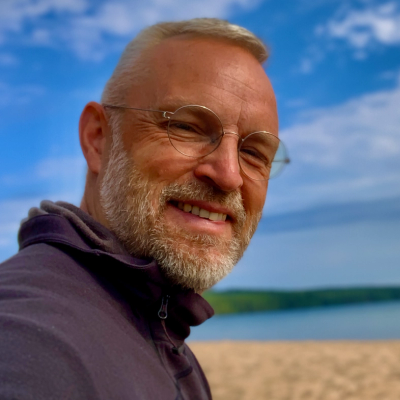HR, management, and learning and development leadership decide how to use limited resources for developing and upskilling the leaders and employees of their organization on a daily basis. With the increasing employee focus on legitimate career development options, as well as the increasing need for reskilling and upskilling in general, these decisions grow more important.
In this article, we take a closer look at training vs coaching: when training courses are appropriate for employees and when individualized coaching is the best investment for the present and the future.
Training vs Coaching - What is the difference?
The difference between a general course and coaching is the direct, personal intervention the leader or employee experiences. A general course is, well... general. They are most often prescribed modules or credits without individualization. As the American Psychological Association study into the Effectiveness of Individual Coaching, Self-Coaching, and Group Training explains:
“If there is a general need to systematically prepare employees to perform on specific tasks, group training seems appropriate...”
However,
“when certain aspects of working conditions or individual development goals are paramount, coaching might be indicated”
The Pitfalls of General Training and Development Courses
Organizations turn to training courses for several reasons. The most common is when there are general weaknesses within the team. Or when a different skill set is needed for the organization to reach higher levels of performance and success.
The usual practice is to send groups on a course together, like first aid, manual handling, or software training. Or, to give an open invite course where anyone is welcome to join. Courses might be tailored for the whole organization when new software or systems training is needed or with a general aim to help organizations upskill leaders and employees.
There are, however, some upfront challenges with this way of helping team members to learn and grow.
1. Course is not individualized or timely
The fact is that what is learned through general courses is rarely individualized for the specific employee or organization. S/he may not experience the training as relevant for their career or progression, especially if the timing is unfavorable.
Courses should take place at a time in a person's life when s/he finds it relevant, and can clearly see the meaning of the content presented. This might be harder to ensure with a general course where topics covered are not tailored to the employee's ambitions. Furthermore, if employees are enrolled just because the budget exists rather than for their benefit, it might be money wasted.
2. Course topics and learnings are not put into action
Use it, or lose it. General courses have a real problem in that most information gets forgotten. If information is not used directly after being learned, employees forget quickly. It is sad but true. Most of us have experienced this.
For training to avoid this pitfall; it needs to ensure hands-on elements with role-playing, practice, and feedback. If the course involves people using simulations, real-life training, some gamification; the learning becomes assimilated and is worth the time and money invested. If not, it can just be wasted time and effort.
3. Courses are too short
Courses are almost always high-intensity learning which does not give the employees the benefit of continuous development over time. If we want the learnings to stick, we need to give people time to take everything in.
Employees need space and time to reflect on the topics and methodologies presented to them. They need opportunities to try things out, get feedback and then apply learnings in real-life situations. It's helpful to arrange refresher days in the months following to ensure the learning is not lost. This keeps the course from simply being a “one-off” experience.
When are Courses a Good Idea?
Most companies use general courses to teach employees about policies, standard operating procedures, or specific ways of doing things. These tend to be generic and rarely need individualization. In these instances, you may offer your employees general training, or advice and mentoring, where you role-model and tell people how to do things.
If your aim is for the employee to think for himself/herself, come up with their own solutions, and challenge the conventional ways of doing things - business coaching should be your go-to.
Coaching Ensures an Individualized Learning Journey
One of the most transformational benefits of coaching from the recipient's perspective and experience is individualization. Coaching is a 1:1, tailored journey, ensuring focused and fruitful learning. By customizing each coaching journey to the individual, you:
- Address the specific needs of the individual and business
- Match the learning style of the individual
- You begin from the starting level of the leader or employee
- Don’t waste employee time with ineffective one-size-fits-all approaches
- Progress each individual in a tailored direction at a pace that suits them
- Extend the coaching process so that the learning can grow into new habits
With continuous support, the individual can try out new behavior and get feedback. They can go deeper into the underlying mechanisms that enable or hinder growth in themselves and their organization.
Habit-building
When it comes to learning and building new habits, it is vital to ensure that the individual is supported continuously, not just for a few days or months. Changing habits takes time. It requires you to be challenged in using your newly learned behaviors. When it comes to reskilling and capability building, a couple of repetitions or days will not do the job. It takes hard work to create new habits.
Habits are built through a process - and not singular demonstrations
The McKinsey HR report, 2020 explains that asking an individual to do something completely different needs far more than a demonstration or a motivational speech. They need to be coached, helped, and given feedback after using the new skills in real-life situations. Taking small steps, one at a time, instead of trying to change everything at the same time, is paramount.
It is equally important to understand that it is a continuous process. We cannot just switch to new habits easily. It is too easy to fall back to “what we have always done" - our old habits. It feels secure and safe, even though it no longer makes sense, serves us, or even pays off. This is also why behavioral design can help us change our habits - by removing road-blockers, we ease the process towards success.
An open mind helps the new habit-building
We must appreciate why “starting new things” seems so hard. It is because we need to rewire our brains, and body systems to think and act in new ways. For some, that might trigger fear. We fear the change. And most of us become easily discouraged in the beginning because of the anxiety of failure.
In the McKinsey Quarterly, Achi and Berger share their advice and experiences in regards to what it takes to overcome this potential discouragement and potential fear and make it easier for ourselves to make new and better habits. They suggest that we train ourselves to "delight in the possible". They suggest this because we are too used to telling ourselves that there is one straight answer or one way of doing things, which seldom is true. Instead, we need to look at things with an open mind - which can be trained! To assist our ability to “delight in the possible” and stay open-minded, they recommend training three simple habits, where we deliberately try to:
- Ask different questions
- Take multiple perspectives and
- See systems
In coaching sessions, we are assisted in deliberately taking these mindsets. Through the questions asked, we are encouraged to take multiple perspectives and see systems. We are also invited to ask questions ourselves. Coaching, then supports the mindsets, helps us to connect the dots, make sense and find meaning in the systems we act in.
If you need further inspiration and insight about habit building and change, have a listen to habit expert, James Clear.
Continuously making progress
On a final note: Coaching assists us in continuously making progress, that we continuously develop ourselves and stay open minded and continuously asks questions and adapts to the current reality.
“The act of reaching personal goals, organizational results, and continually making progress in meaningful work brings us new creative energy.”
In this quote by Amabile and Kramer, authors of “The Progress Principle'', shows how a continuous coaching model strengthens employees' “inner work life” over time, leaving them better suited to thrive and perform sustainably. This inner work life is illustrated below, highlighting how we process work events, and how this affects our workday motivation as well as performance. The inner work life system can be positively shaped by coaching - and requires that one continuously is asked to focus on progress, what is working well and better og what is worth celebrating:

In Conclusion: Training vs Coaching
The question was: What is the best way to help your employees learn and grow?
Courses offer predefined scripts as to how and what the employee should learn. This is effective when there is a general need to systematically prepare employees to perform specific tasks.
However, when certain aspects of working conditions or individual development goals are paramount, coaching is the best investment. A coach uses tailored, and relatable intrinsic motivation to enable the realization of potential. Coaching goes far beyond generic lessons by guiding employees to think for themselves and steer companies in new directions.
We hope that we with this article have illuminated the difference between courses and coaching in a way that helps to guide your decisions in regards to what to offer specific employees in your organization. If you still have any outstanding questions, you are always welcome to reach out. We are here to help you make the best decisions regarding how to get the best Return on Investment on your budget for developing your workforce.












